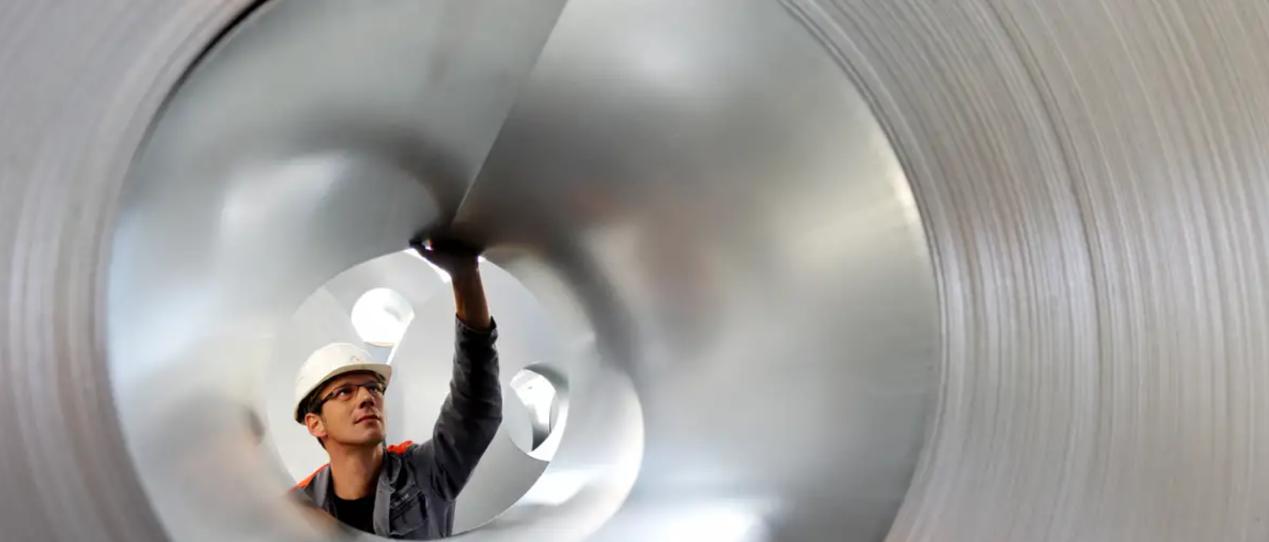
On October 7, 2025, the European Commission announced that it would double the steel import tariff from the current 25% to 50%, and at the same time reduce the import quota by nearly half to 18.3 million tons per year. This policy is regarded as a core measure of the EU's "reindustrialization" strategy, but the industrial protection logic, geopolitical games, and the restructuring of the global trade pattern reflected behind it deserve in-depth analysis.
I. Policy Motivation: From Industrial Dilemma to Strategic Defense
The EU's steel industry is facing structural problems. In the first quarter of 2025, the EU's steel exports to the US plummeted by 42%, and the profit margin of enterprises dropped to 3.2%. Meanwhile, the pressure of global overcapacity continues to rise. According to the OECD's prediction, the global steel overcapacity will reach 721 million tons in 2027, far exceeding the growth rate of demand. Against this backdrop, the current safeguard measures implemented by the EU in 2018 have shown signs of fatigue: in 2024, the import volume still reached 28 million tons, accounting for a quarter of the EU market sales.
The direct trigger for the policy adjustment came from the US. In June 2025, the US raised the import tariffs on steel and aluminum from 25% to 50% and covered 407 types of derivatives. If the EU did not follow suit, its steel enterprises would face a "double squeeze": on the one hand, the cost of accessing the US market would soar; on the other hand, low-priced imported steel might be re-exported through the EU market, impacting domestic production capacity. Eleven countries including France and Italy jointly demanded stronger protection, and although Germany was cautious, it eventually yielded to the pressure from the industrial alliance.
II. Policy Design: From Trade Relief to Industrial Restructuring
The new regulations present three major features:
1. Fine-tuned quota management: Based on the 2013 import volume (18.3 million tons), it will be reduced by 47% compared to 2024. The quota allocation will be determined through bilateral negotiations. European Economic Area countries such as Norway and Iceland are exempted, but major exporting countries like China and India face stricter restrictions.
2. Differentiated tariff leverage: A 50% tariff will be imposed on the excess portion, aligning with the US standard. This move aims to reserve space for subsequent US-EU trade negotiations - if the US agrees to lower tariffs, the EU can adjust the quota allocation.
3. Strengthened traceability rules: The "melting and casting" origin standard is introduced, requiring the steel production process to be traced back to the melting stage. This rule directly targets the issue of Chinese steel being re-exported through countries like Vietnam and India to the EU. It is expected to increase the export cost of these countries to the EU by 15% to 20%.
Iii. Economic Impact: From Short-term Pain to Long-term Game
Within the European Union, the policy effects present a dual nature. On the one hand, enterprises like ArcelorMittal that have a global production capacity layout are supported by policies because their European bases can be protected by quotas. On the other hand, the British steel industry has issued a "threat to existence" warning, and the British government has initiated emergency consultations. French economic models show that after the policy is implemented, steel prices may rise by 8% to 12%, and the costs of downstream automotive and machinery industries will increase by approximately 3.5 billion euros per year.
For the global market, policies will accelerate the reconstruction of trade flows. The Ministry of Trade, Industry and Energy of South Korea has estimated that its steel exports to Europe may decline by 18% to 25%, and it plans to seek quota preferences through free trade agreements.
In terms of geopolitics, policies highlight the deepening of the industrial alliance between the United States and Europe. Eu Trade Commissioner Kevjovic and US Trade Representative Greer have resumed negotiations, attempting to incorporate the "low-tariff quota" model into the framework of the US-EU Trade and Technology Council (TTC). This move may trigger retaliation from emerging economies. India has considered launching counter-investigations into EU wine and auto parts.
Iv. Deep-seated Contradictions: From Industrial Protection to Strategic Autonomy
The design of EU policies implies two major contradictions:
The conflict between short-term protection and long-term competitiveness: Tariff barriers can temporarily relieve the pressure on domestic enterprises, but they cannot solve structural problems such as high energy costs (electricity prices in the EU are seven times those in the US) and the lag in carbon neutrality transition. German companies such as ThyssenKrupp have warned that if technological upgrades in electric furnace steelmaking and hydrogen metallurgy are not advanced, the quota protection will eventually fail.
2. The collision of unilateralism and multilateral rules: Although policies claim to comply with WTO rules, the "smelting and casting" standards may be regarded as disguised restrictions on origin. China has filed a complaint with the WTO, demanding that the EU provide proof of technical rationality. If the dispute escalates, it may trigger a larger-scale trade war.
The adjustment of the EU's steel policy reflects the transformation of the global industrial competition paradigm: from efficiency first to safety first, and from market openness to strategic autonomy. Whether the EU's "reindustrialization" can succeed ultimately depends on whether it can strike a balance between protectionism and open competition. The doubling of steel tariffs and the halving of quotas might just be the prologue to this industrial game.

The U.S. third-quarter GDP growth rate, strikingly highlighted at 4.3%, not only surpassed market expectations but also earned the label of "the fastest in two years."
The U.S. third-quarter GDP growth rate, strikingly highligh…
Recently, US personnel intercepted a "Century" super oil ta…
According to Xinhua News Agency, the subtle changes in the …
The rapid development of artificial intelligence has brough…
In December 2025, Taiwan's political scene was shaken by a …
When Apple appears for the Nth time on the list of penaltie…